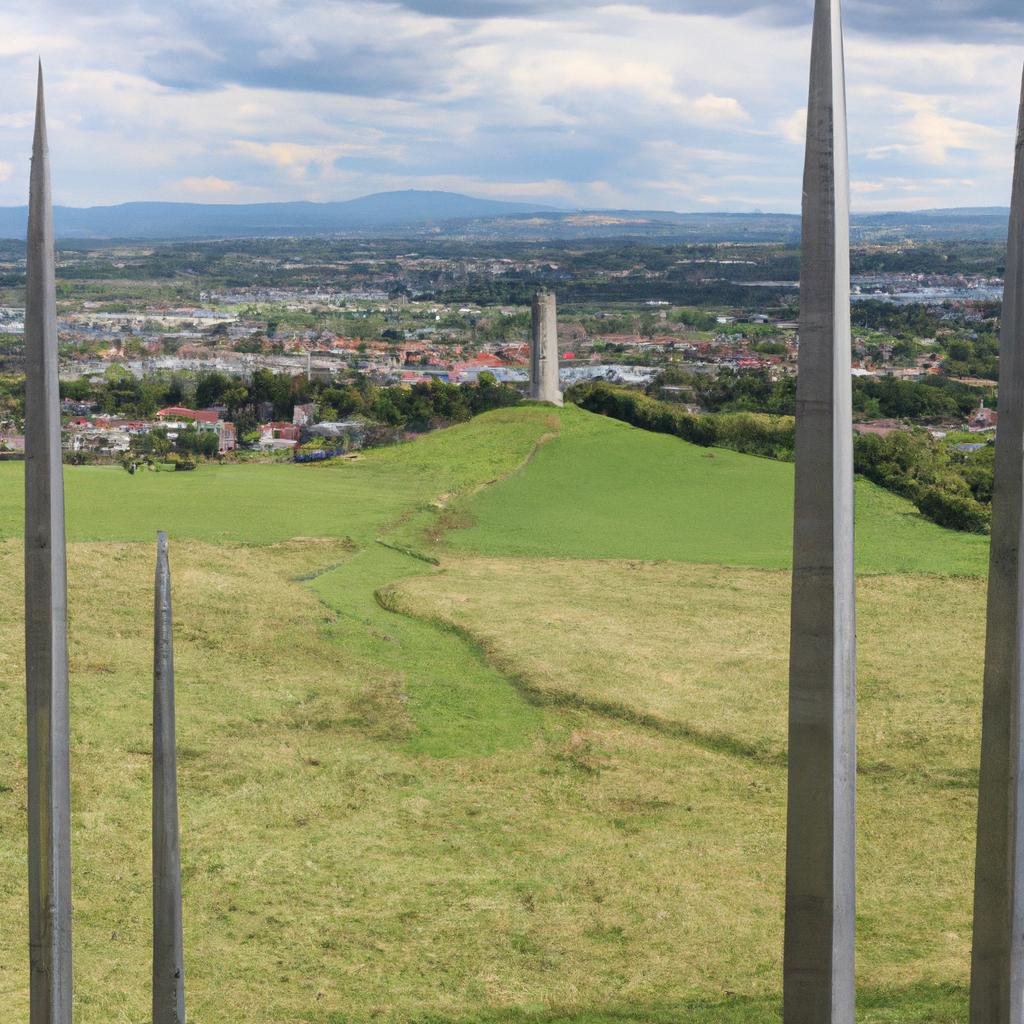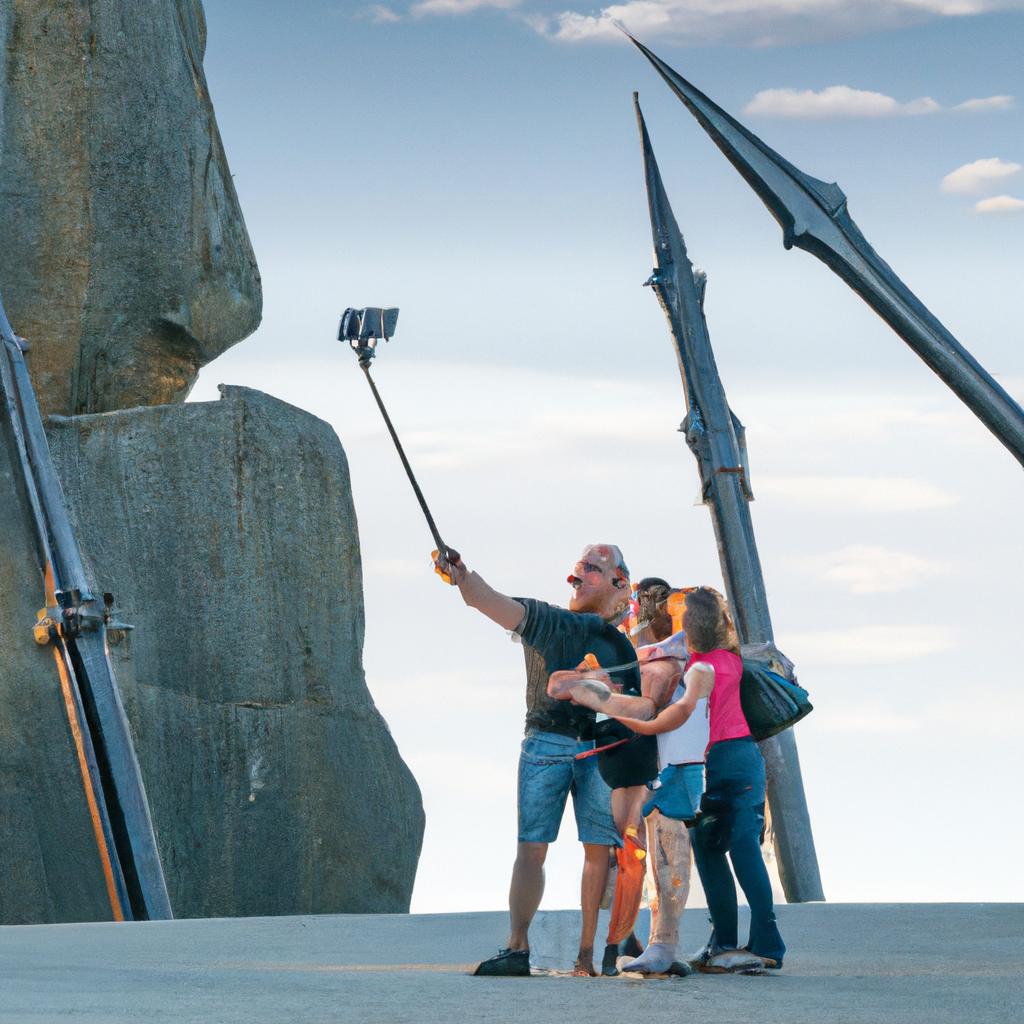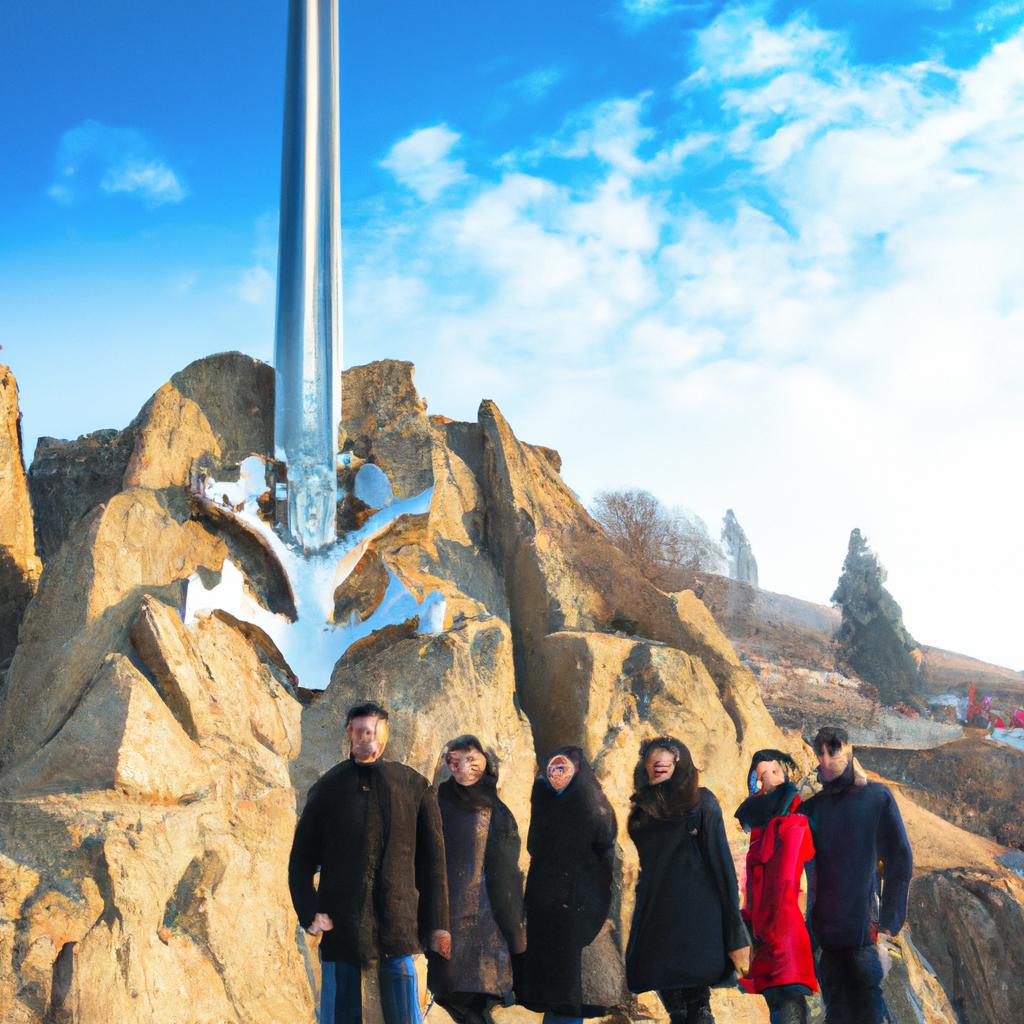If you’re planning a trip to Stavanger, Norway, make sure to put the Swords in Rock monument on your must-see list. This iconic monument showcases three swords embedded in a rock, symbolizing the legendary battle of Hafrsfjord, which unified Norway under one king. Beyond its breathtaking design, the monument carries immense cultural and historical significance that every visitor should know.
Journey into History
To truly appreciate the importance of the Swords in Rock monument, we must travel back to the 9th century, when Norway was divided into multiple kingdoms. The land was plagued by endless warfare and power struggles until Harald Fairhair, a fierce Viking warrior, emerged as the first king of Norway. Legend has it that Harald triumphed over his adversaries in a decisive battle at Hafrsfjord, near Stavanger.
The Swords in Rock monument serves as a commemoration of this legendary battle and the subsequent unification of Norway. Sculptor Fritz Røed won a competition organized by the Stavanger Municipality in 1983 to bring the monument to life. Røed’s design features three bronze swords, each towering over nine meters in height, mounted on an enormous rock. Weighing approximately 60 tons, the rock was transported from a nearby quarry to the monument site.
Design and Symbolism
The Swords in Rock monument is not merely a work of art; it is a powerful symbol reflecting Norway’s history and culture. The three swords represent the three victorious kings in the battle of Hafrsfjord: Harald Fairhair, Eirik Bloodaxe, and Håkon the Good. Interestingly, the swords are positioned in the ground at an angle, emphasizing that the battle’s outcome depended on the weight of the swords rather than their sharpness.
The choice of rock is significant, as it embodies Norway’s rugged landscape and the resilience of its people. Furthermore, the monument’s location by the sea carries symbolism, as Norway’s history and culture have always been intricately linked to the vast waters. In essence, the Swords in Rock monument stands as a testament to Norway’s unity, strength, and unwavering spirit.

In the following sections, we will delve into the popularity of the Swords in Rock monument, explore the controversies surrounding it, and examine the impact it has had on the local tourism industry.
A Magnet for Visitors
Since its unveiling in 1983, the Swords in Rock monument has captivated millions of visitors from around the globe. Nestled in a beautiful park by the sea, the monument provides an ideal setting for a leisurely stroll along the beach, a delightful picnic, or simply marveling at its impressive dimensions and intricate design.
The monument’s popularity has been further boosted by its appearances in various movies and TV shows, including the highly acclaimed series “Vikings.” Such exposure has shed light on Norway’s rich Viking heritage and culture, transforming the Swords in Rock monument into an iconic symbol of that legacy.
Transforming the Local Tourism Scene
The impact of the Swords in Rock monument on the local tourism industry in Stavanger cannot be overstated. Each year, the monument entices thousands of visitors to the area, many of whom also contribute to the economy by investing in accommodations, dining, and other activities. As a result, Stavanger has emerged as a coveted destination for travelers from all corners of the globe.

The monument’s popularity has created employment opportunities within the tourism sector and has attracted further investment to the region. Stavanger, thanks to the Swords in Rock monument, is now firmly placed on the map as a thriving tourist hotspot.
In conclusion, the Swords in Rock monument stands tall as a poignant symbol of Norway’s history and culture. Its towering presence and captivating design continue to captivate visitors from around the world, while propelling the local tourism industry to new heights.
Controversies and Debates
Nevertheless, like any notable landmark, the Swords in Rock monument has not escaped controversy and vigorous debate. Critics question its historical accuracy and cultural significance, arguing that it oversimplifies Norway’s intricate past and culture by placing excessive emphasis on the Viking era.
Voices of Dissent
Detractors argue that the monument neglects other critical periods and events in Norwegian history, focusing solely on the battle of Hafrsfjord. Furthermore, they highlight the battle’s legendary nature, suggesting a lack of concrete historical evidence to support claims that it was a transformative event in Norwegian history.
Another critique is that the monument promotes a narrow and exclusionary view of Norwegian culture, centering on violence and masculinity while overlooking other facets of Norwegian life and identity. Skeptics believe it perpetuates stereotypes of Norway as a nation composed solely of rugged warriors, neglecting its diversity and cultural complexity.
A Counterbalance
Yet, supporters and defenders of the Swords in Rock monument contend that it remains a vital symbol of Norwegian unity and identity. They assert that the monument commemorates a pivotal moment for Norway when the country consolidated under one king and commenced its journey toward nationhood. Additionally, they argue that the monument’s focus on the Viking era celebrates Norway’s unique cultural heritage and allures visitors from around the world.
Ultimately, the Swords in Rock monument remains a significant tribute to Norway’s historical past and cultural tapestry. For those intrigued by Viking lore and passionate about exploring Norwegian identity, it stands as an essential destination.
In Conclusion
The Swords in Rock monument stands as one of Norway’s most remarkable landmarks, a testament to the nation’s captivating history, culture, and identity. From its awe-inspiring design to its profound symbolism, the monument offers visitors a window into Norway’s remarkable journey.
Despite the controversies that surround it, the Swords in Rock monument continues to welcome millions of visitors annually, leaving an indelible mark on the local tourism industry in Stavanger. Whether you are a history enthusiast, a fervent admirer of Viking sagas, or simply seeking a destination of beauty and inspiration, the Swords in Rock monument demands a place on your travel itinerary.
At TooLacks, we honor the rich diversity of cultures and histories that shape our world. The Swords in Rock monument stands as a testament to the enduring legacy of Norway’s unique cultural heritage.



